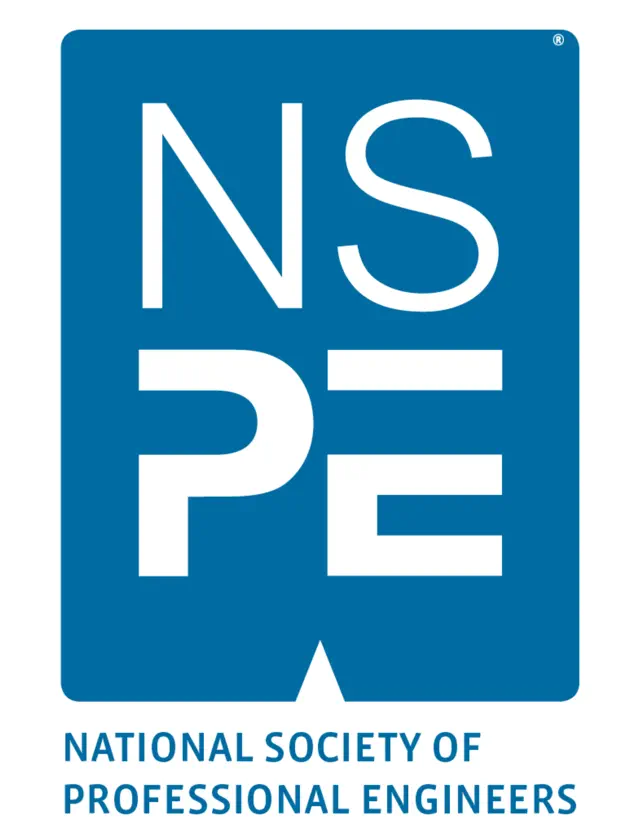Winter 2023
NSPE Today: Policy Perspectives
Sustainability and the PE’s Obligations
By Rebecca Bowman, Esq., P.E., D.F.E.
 Among our obligations to our clients and firms, our obligations to the profession, and our obligations to the public, is our absolutely number one priority as professional engineers to protect the public health, safety, and welfare. These obligations are not a zero-sum game, or mutually exclusive. The ethical integration of these obligations constitutes professional integrity. We should always strive to fulfill all of our obligations, but the protection of the public always comes first.
Among our obligations to our clients and firms, our obligations to the profession, and our obligations to the public, is our absolutely number one priority as professional engineers to protect the public health, safety, and welfare. These obligations are not a zero-sum game, or mutually exclusive. The ethical integration of these obligations constitutes professional integrity. We should always strive to fulfill all of our obligations, but the protection of the public always comes first.
NSPE recognizes that attention to sustainable and resilient design practices is critical to the health of the planet and is an integral part of the practice of engineering. And consideration of sustainable and resilient techniques and technologies in making design decisions can substantially increase project value for your clients. Incorporating sustainability into our professional practice and advocating for related public policies may present some challenges going forward, but as professional engineers we are uniquely positioned to meet these challenges.
Engineers tend to have a passionate commitment to problem solving. Bringing in the sustainability discussion asks engineers to consider that perhaps they are not always solving the right problem. By incorporating sustainability into engineering design, planning, and analysis, some fundamental assumptions will be challenged, beginning with the assumption that growth is good. Incorporating sustainability requires us to consider the possibility that growth may be neither beneficial nor sustainable.
Balancing the Costs of Sustainability
The point is that sustainability can feel like something squishy. And we engineers prefer solid and knowable. However, if we hold up sustainability and examine it from a different perspective, we discover that we are really talking about changing the definition of total cost. We are all accustomed to "total cost" being the sum of the checks written for labor, materials, and process. However, incorporating sustainability considerations asks that we consider total cost more broadly.
What are the upstream impacts/costs? What is the source of our construction energy? Could we do something differently so that the energy we need could be harvested (and stored?) on site? What are human and environmental costs of mining materials? Could we use a different material with fewer impacts/costs? Could we recycle existing materials so that no virgin materials are necessary? Or at least fewer virgin materials?
What are the mid-stream impacts/costs? Can an existing structure be repurposed instead of engaging in new construction? Again, with the energy questions, can we site the building in such a way as to facilitate harvesting of solar, wind, or geothermal energy? What about the project’s traffic impacts? Access to public transportation for workers? Charging stations (and the energy to support them) for electric vehicles?
What are the downstream impacts/costs? What are the effects of the demolition products? Can the demolition products be removed in a different way so that they can be reused? Is the project going to create physical barriers between workers and work unnecessarily? Can materials be selected that can be fully recycled? Or even upcycled? Will there be liquid waste products that could damage the water supply if there was a leak?
Does extra care need to be taken to sequester those liquid waste products, both to reuse and to avoid leaks? To help us consider how to incorporate this broader definition of total cost, two sources can be especially useful. First, there are many sources explaining the three or four "pillars of sustainability." The three-pillar version asks for consideration of economic, environmental (or "ecological"), and social ("fabric" – community, culture, support systems) costs. The four-pillar version adds separate consideration of human costs – as in individual humans, not just groups of humans. Reaching down to the individual level pulls in health, nutrition, education, knowledge, skills, and access to services.
A second source that can help us consider how to incorporate this broader definition of total costs can be found in the United Nations Sustainable Development Goals. There are 17 goals. The goals themselves can be esoteric and seem unrelated to our design work. However, when the statistical background is added, the questions for us to answer quickly become apparent.
Considering just the first goal: "No poverty." It would be easy to smugly assert that our project will provide jobs, that that’s all we can do. However, the statistical background is that 10% of the world’s population live in extreme poverty and 20% of the world’s children live in extreme poverty and 75% of those living in extreme poverty live in rural settings. Now we can ask more concrete questions. Will the project need to feed the workers? Will the project need on-site childcare in order to attract workers? Could a little tweak improve access to the interest in a "dark" area? (And maybe qualify for grant funding?)
These are the sorts of considerations that engineers must incorporate in order to fold sustainability into their work. Of course, these considerations require that engineers be aware of new materials and techniques so that they can be incorporated. The engineer’s ethical obligation to practice only in areas of competence may become limiting if the engineer fails to both be current and to consider sustainability issues. We are in exciting and challenging times, requiring more of us than ever before. NSPE is here to help equip us to meet these challenges.
The Intersection of Ethics and Sustainability
Let’s take a look at the intersection of ethics with sustainability. The NSPE Code of Ethics for Engineers governs NSPE members. Many state licensing boards (through statute, regulation, or practice) have incorporated most or all of the Code of Ethics into the regulation of the profession. The Code of Ethics strongly encourages engineers to incorporate principles of sustainable development.
The NSPE Code of Ethics is structured in three layers: Fundamental Canons, Rules of Practice, and Professional Obligations. Each is sequentially closer to the ground than the layer before. For the purposes of this discussion, the applicable sections (and their layers) are shown below:
I. Fundamental Canons: Engineers, in the fulfillment of their professional duties, shall:
1. Hold paramount the safety, health, and welfare of the public.
2. Perform services only in areas of their competence….
6. Conduct themselves honorably, responsibly, ethically, and lawfully so as to enhance the honor, reputation, and usefulness of the profession.
II. Rules of Practice
1. Engineers shall hold paramount the safety, health, and welfare of the public….
b. Engineers shall approve only those engineering documents that are in conformity with applicable standards.
2. Engineers shall perform services only in the areas of their competence.
a. Engineers shall undertake assignments only when qualified by education or experience in the specific technical fields involved.
III. Professional Obligations
1. Engineers shall be guided in all their relations by the highest standards of honesty and integrity….
b. Engineers shall advise their clients or employers when they believe a project will not be successful.
2. Engineers shall at all times strive to serve the public interest….
a. Engineers’ work must be in conformity with applicable engineering standards.
d. Engineers are encouraged to adhere to the principles of sustainable development in order to protect the environment for future generations. "Sustainable development" is the challenge of meeting human needs for natural resources, industrial products, energy, food, transportation, shelter, and effective waste management while conserving and protecting environmental quality and the natural resource base essential for future development.
Those seven provisions of the Code of Ethics form a coherent whole in terms of providing guidance regarding a professional engineer’s obligations regarding sustainability, beginning with the paramount obligation to the public.
Integrating and implementing these seven provisions ethically obligates us to bring any special knowledge that we have to our client’s projects. For example, we know that severe weather events have changed local conditions. Whether or not flood maps have been updated, our knowledge of local conditions should be brought to bear. In the area where I live, there have been five 100-year storms in the past 18 years and two 500-year storms in the same time frame. Consequently, neither of those designations is any longer useful information. Part of my responsibility as an engineer may be to advise my client to raise the elevation of the structure to avoid repeated inundation. Or perhaps I need to alter the foundation design to reflect a changing water table.
My point is that considering concerns of resilience and knowledge of sustainability materials, techniques, and technologies is part of both our ethical obligation and the value that we add to our client’s projects.
, Esq., P.E., D.F.E., is NSPE’s senior director for ethics and professional practice.


 Volunteering at NSPE is a great opportunity to grow your professional network and connect with other leaders in the field.
Volunteering at NSPE is a great opportunity to grow your professional network and connect with other leaders in the field. The National Society of Professional Engineers (NSPE) encourages you to explore the resources to cast your vote on election day:
The National Society of Professional Engineers (NSPE) encourages you to explore the resources to cast your vote on election day:


